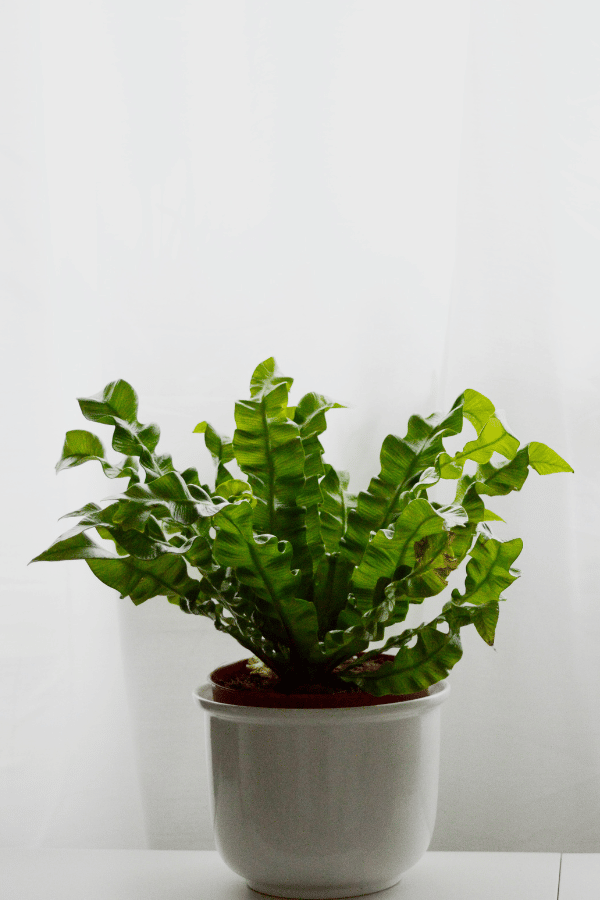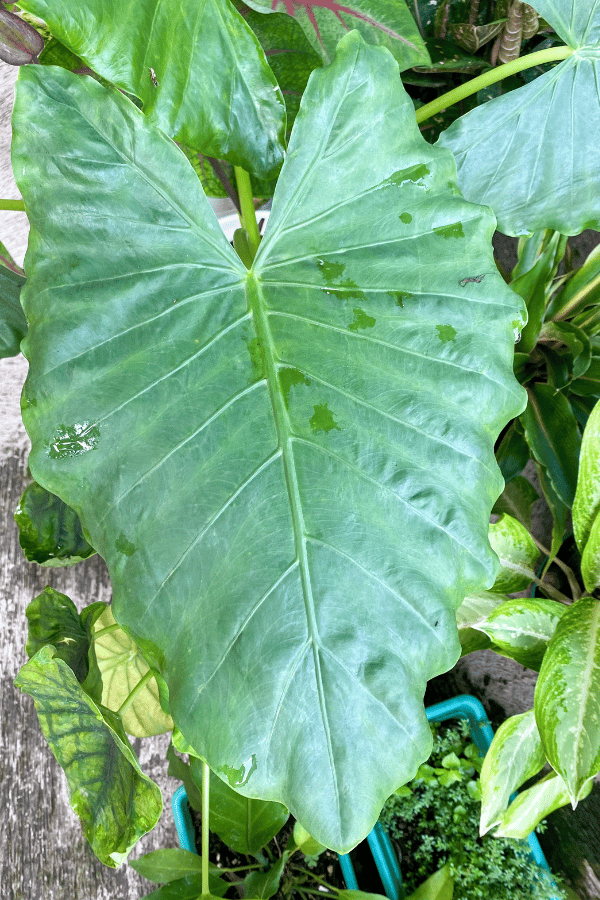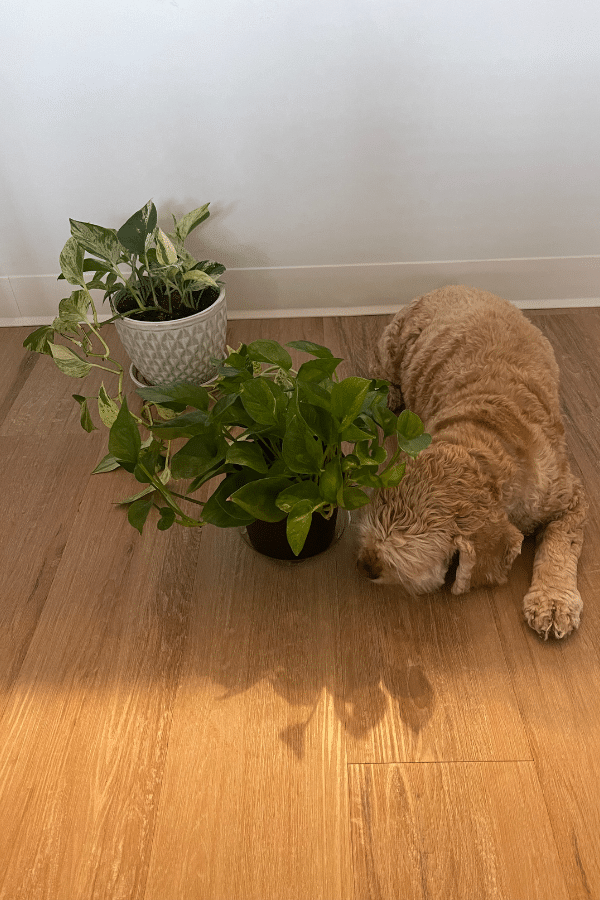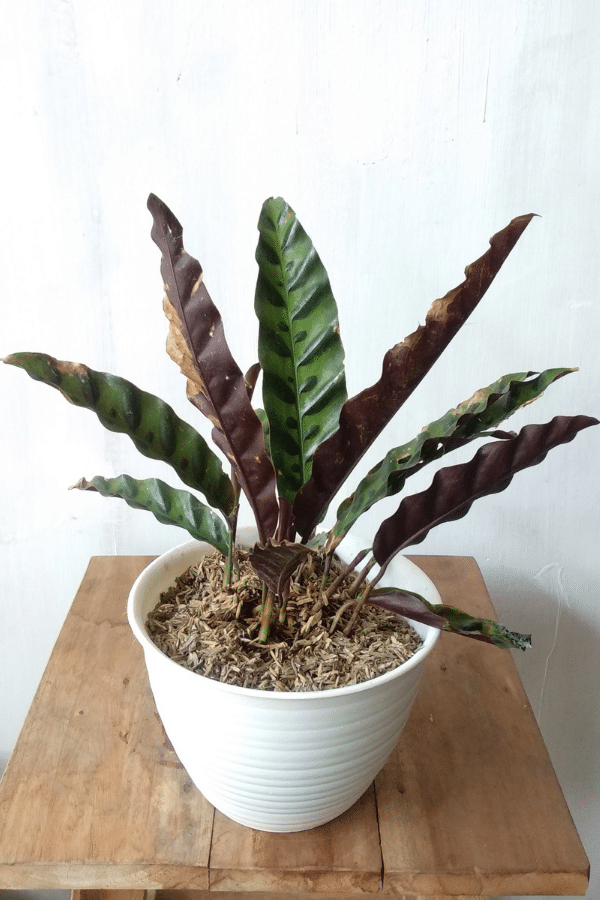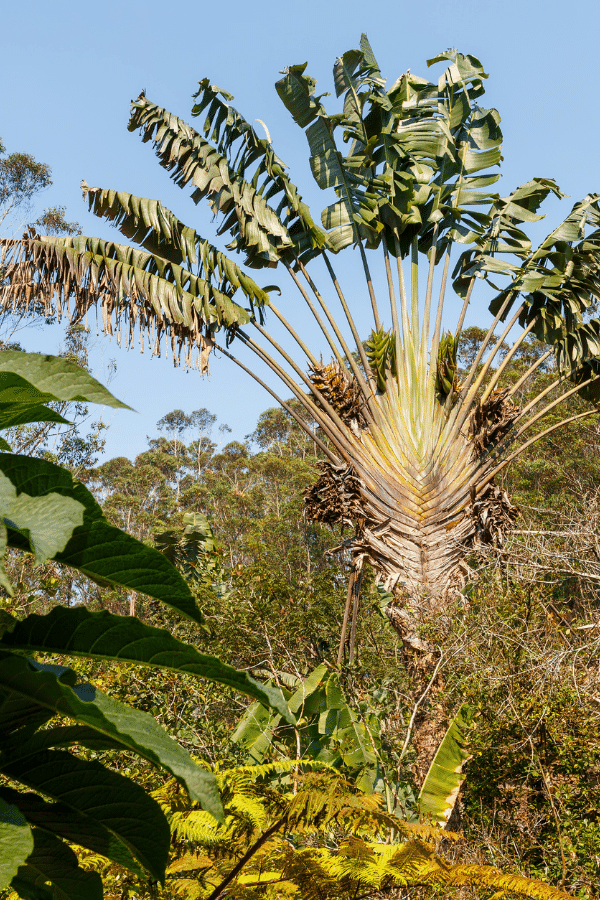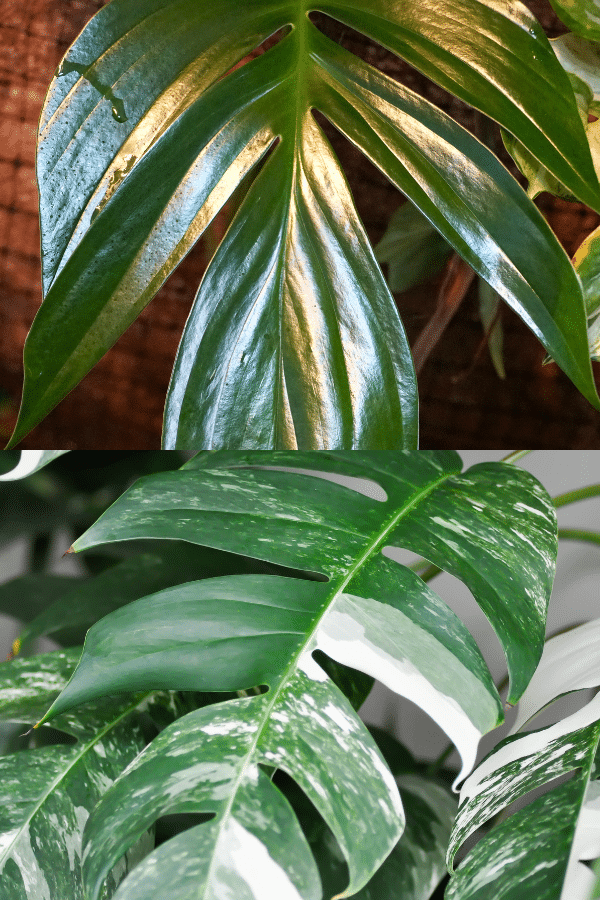Calathea Zebrina
Scientific Name: Calathea Zebrina, Goeppertia Zebrina
Common Name: Zebra Plant
Calathea Zebrina care is an easy Calathea to grow and care for. If you want a houseplant that won’t get too big and give you smooth velvety intricate leaves, a Calathea Zebrina plant may be for you.
To give this Calathea plant the best care, it requires well-draining soil that is rich in nutrients, keep soil moist by watering often, provide it medium filtered sunlight, temperatures ranging from 65-75F, and high humidity levels.
Quick Care Overview
| Common Name | Zebra Plant |
| Scientific Name | Calathea Zebrina, Goeppertia Zebrina |
| Family | Marantaceae |
| Origin | Brazil |
| Growth Rate | Medium to fast |
| Identification | Smooth velvety foliage with patterns resembling zebra stripes |
| Height | Up to 3 feet tall |
| Soil | Well-draining soil rich in nutrients |
| Water | Keep soil moist |
| Temperature | 65-75F |
| Sunlight | Medium filtered light |
| Toxic to Cats & Dogs | No |
| Toxic to Humans | No |
| Pests | Mealybugs, spider mites, scale, aphids |
| Diseases | Root rot |
Below we will dive deep into this Calathea Zebrina care guide.
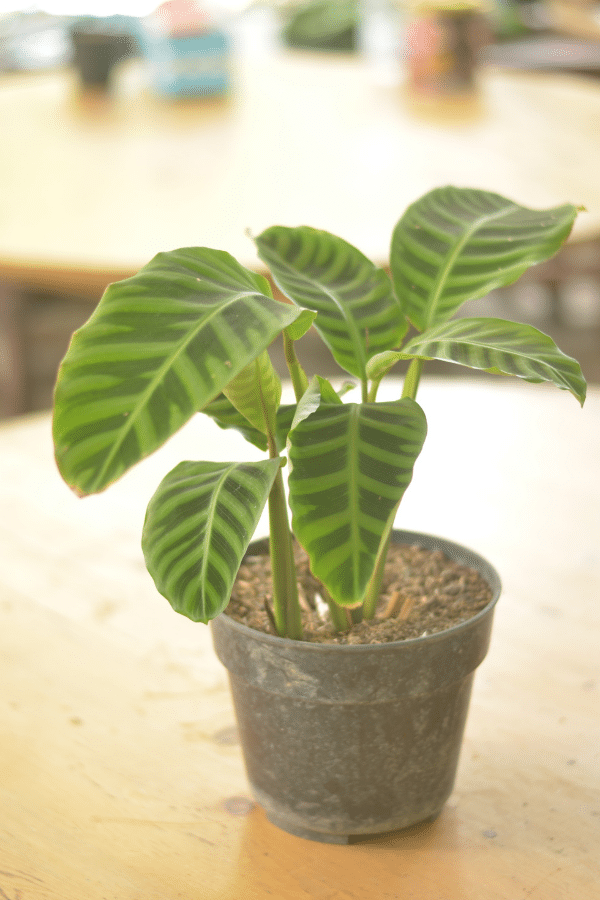
Calathea Zebrina History
Brazillian Native, Calathea Zebrina, also known as the Zebra Plant, is a must-have for many houseplant collectors due to its attractive, lush foliage. Being a trendy plant, this prayer plant has interestingly been sold in various garden centers by multiple names such as Aphelandra Squarrosa, Calathea Binotii Gentil, Endocodon Zebrina, Goeppertia Zebrina, Maranta Bicolor, Maranta Pulchella, Maranta Zebrina, Phrynium Bicolor, Phrynium Pulchellum, Phrynium Zebrinum, and Phyllodes Zebrina.
Calathea Zebrina Identification
The Zebra plant presents foliage that has smooth, velvety textures. Leaves have interesting patterns of various shades of green, giving the leaves the appearance of zebra stripes. In addition, the underside of its foliage has a deep purple coloring that provides this Calathea with a contrasting striking appearance. Each leaf may grow larger than 15 inches.
Calathea Zebrina Growth Facts
Quick growing and lush, this Calathea requires fertilizer, ample lighting, and well-draining, rich soil to have robust growth.
How Big Does a Calathea Zebrina Get?
Calathea Zebrina will grow to be about 3 feet tall.
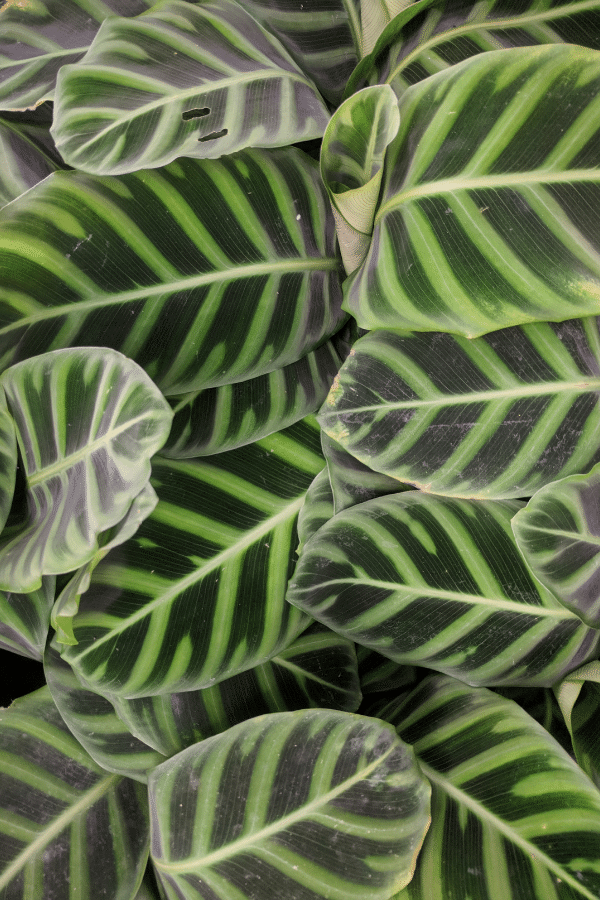
Calathea Zebrina Care
Calathea Zebrina care is easy and will do well when placed in a bright room, as long as you are able to provide it with the care it needs to flourish.
Calathea Zebrina Soil
The Zebra plant enjoys being potted in a rich, well-draining growing medium. A peat moss or coco coir-based soil is ideal. Such mediums will retain water and also allow for ample drainage. Drainage may also be increased by incorporating perlite. Alternatively, you may use an African violet potting mixture.
Calathea Zebrina Fertilizer
Calathea Zebrina is not a heavy feeder and will not require much fertilizer. However, this plant will benefit from a bi-monthly feeding of diluted liquid fertilizer during the growing season. Ensure that you follow label instructions and do not overfertilize. Calathea Zebrina should not be fertilized in the winter.
Calathea Zebrina Watering
During the warm growing season of spring and summer, Calathea Zebrina will require plenty of water, as this moisture-loving plant grows well in moist soil. However, it should be noted that this plant should not sit in water, as this may lead to root rot and death of the plant. Watering frequency in winter should be reduced.
Calathea Zebrina Light Requirements
Calathea Zebrina, being from the tropics, desires lighting that closely resembles the dappled sunlight that would be received from underneath the canopy layer of a tropical forest. Having too intense or too little light will kill this plant. Look for a space near a window that will provide filtered light. Keep in mind that direct sunlight will scorch the zebra plant and cause foliage to dull.
Calathea Zebrina Temperature & Humidity
The Calathea Zebra plant will grow best in average room temperatures between 65 to 75 degrees Fahrenheit. Never allow your Calathea to be exposed to temperatures under 60 degrees Fahrenheit, as this may cause irreparable damage. You should also never allow your Calathea to be placed near heating vents, AC units, cold windows, or drafts. Calathea zebrina requires high humidity to thrive. Therefore, it is recommended to keep this plant in optimal health that you install a pebble tray or humidifier.
Repotting Calathea Zebrina
As Calathea Zebrina is a fast-growing plant, it will likely need to be repotted annually. To repot your Calathea, you should ensure that it has been watered well before repotting, that you repot in spring, and that you select a container with ample drainage holes that is 2 inches larger in diameter than its current pot (excess soil in a pot that is too large will encourage root rot). When repotting, it is important to disturb the roots of this Calathea as little as possible.
Calathea Zebrina Maintenance & Pruning
Calathea Zebrina requires little pruning. This Calathea may be pruned when the foliage of the stalk has become damaged, discolored, or infected. Healthy foliage should never be pruned. Leaves may be cleaned weekly to help maintain their health.
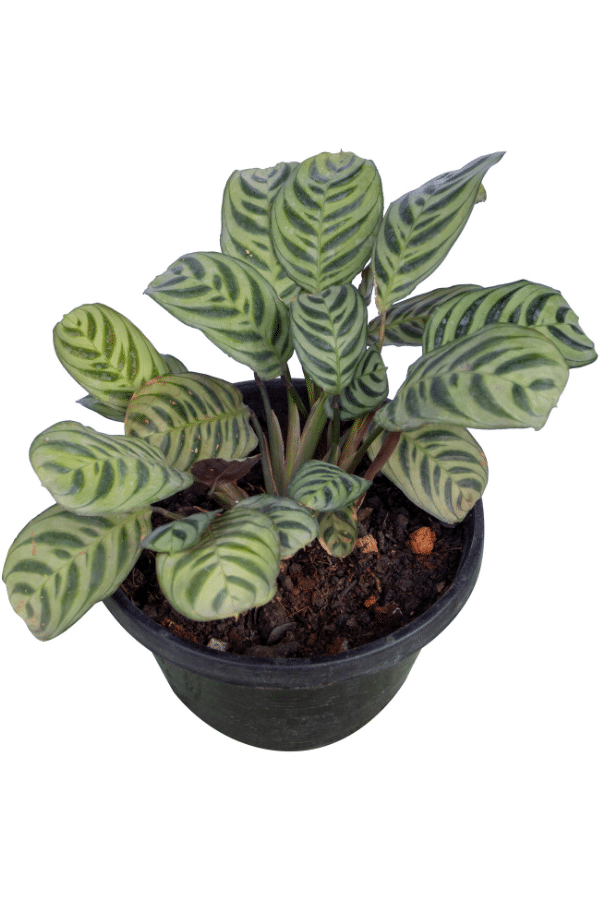
Calathea Zebrina Propagation
Propagation of Calathea Zebrina is near effortless. When repotting, the propagation of new plants may be easily done through root division. During the warm, active growing season, you should see baby plants emerging around the stems of your Calathea. These plants may be gently pulled from the mother plant and potted in their own container. Water your new baby plant thoroughly and place it in indirect sun. Within two months, your new plant should be established and begin to grow.
Calathea Zebrina Toxicity
Like many Calathea varieties, this Calathea Zebrina is non-toxic to humans and pets.
Toxicity to Humans
This Calathea is considered non-toxic to humans. However, its sap may irritate the skin of people who may be allergic.
Toxicity to Cats & Dogs
This Zebra plant is safe for pets and is non-toxic.
Calathea Zebrina Problems
Calathea Zebrina Leaves Turning Yellow
The leaves of Calathea Zebrina may turn yellow when the plant is not receiving adequate water. Be sure to provide it with water and set a good watering schedule.
Calathea Zebrina Leaves Turning Brown
When the foliage of your Calathea turns brown, it likely indicates that you need to increase the humidity level of its environment. This may be quickly done by plant grouping, a pebble tray, or using a humidifier.
Calathea Zebrina Diseases
The Zebra plant is often considered to be disease resistant. Ensure that you do not overwater your Calathea, as this may lead to bacterial or fungal issues such as root rot.
Calathea Zebrina Pests
The zebra plant is typically considered to be pest-free. However, on rare occasions, it may be attacked by aphids, mealybugs, scale, or spider mites, like many other indoor houseplants. Upon identifying an infestation, isolate your plant, and treat it with a pesticide, such as a neem oil. Ensure that you follow all label instructions.
FAQ
Where Do I Put Calathea Zebrina?
Calathea Zebrina should be placed in a spot that receives filtered bright light. Direct light will burn the leaves and the plant will lose its leaf pattern.
How Big Do Calathea Zebrina Grow?
Calathea Zebrina will grow to be around 3 feet tall.
Why Is My Calathea Zebrina Drooping?
Calathea Zebrina droops its leaves when there is not enough moisture within the plant, either from low humidity or not enough water. Set a good watering schedule in place for this Calathea.

